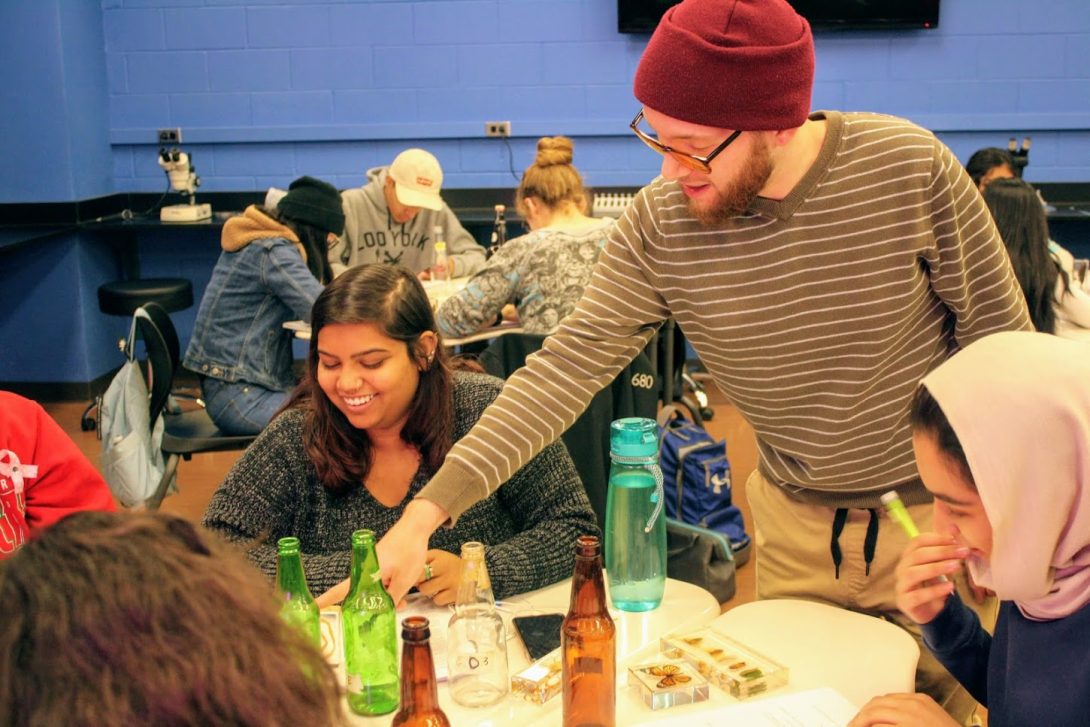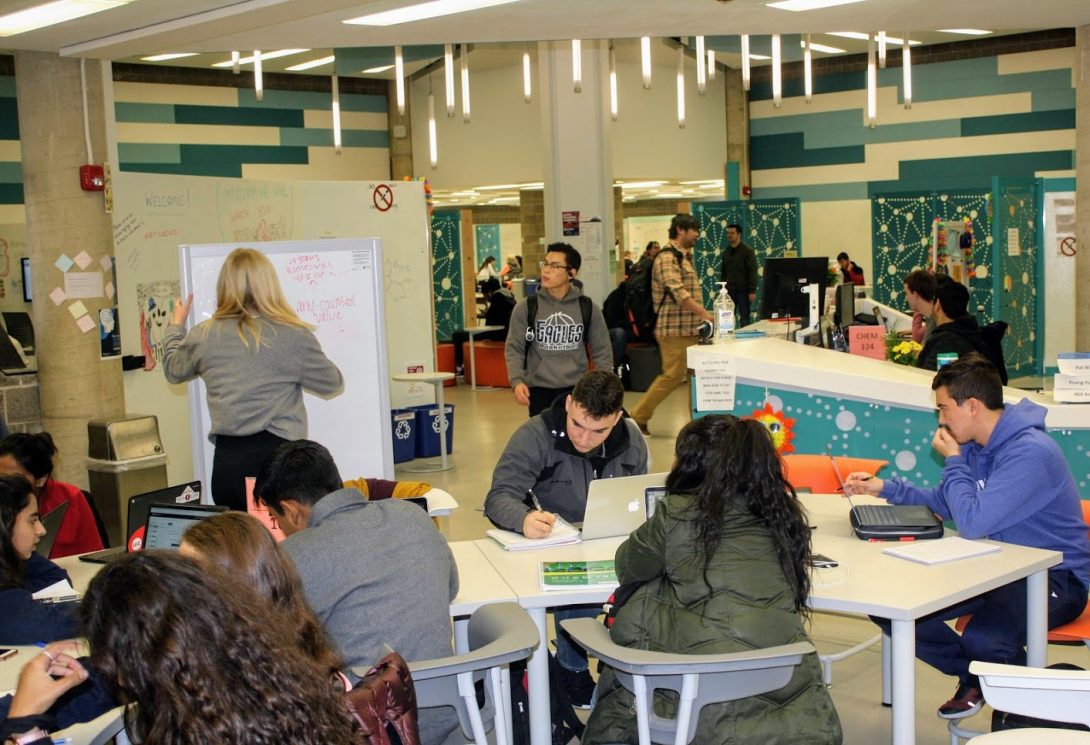Research Explained
What is research?
Drawing on definitions from UIC's Office of Undergraduate Research and Council on Undergraduate Research, research is a study or investigation that aims to make a scholarly or creative contribution to a field, such as Anthropology, Biology, English, etc.
When you perform research, you may explore questions or hypotheses that hold significance to those in your field using a method or approach suitable for the area of study. By the end of your research experience, you'll have gathered evidence or collected data that addresses your topic and adds to our knowledge and understanding of your field.
Research in the Liberal Arts and Sciences Heading link
In the College of Liberal Arts & Sciences, there are four disciplines, or schools of thought, that help organize the fields of study. Disciplines are important because they broadly shape and define research goals, methods, and outcomes. The disciplines are: Natural Science, Social Science, Humanities, and Interdisciplinary Studies.
Natural Science Research

- Studies and observes the physical and natural world.
- Methods for data (facts or information) collection are often quantitative in nature. This means that studies rely heavily on evidence such as numerical data, survey results, lab experiments, or statistical analyses to measure outcomes and draw conclusions.
- Natural Science Fields: Biological Science, Integrated Health Studies, Neuroscience, Chemistry, Earth and Environmental Science, Physics, Mathematics, and Statistics.
Social Science Research

- Studies people, including individuals, groups, and societies and their behaviors and interactions.
- Methods for data (facts or information) collection are qualitative and quantitative in nature. Qualitative studies may collect data from individuals or groups with interviews, observations, or historical analyses to learn how they make meaning of their lives. Quantitative studies rely heavily on evidence such as numerical data, survey results, lab experiments, or statistical analyses to measure outcomes and draw conclusions.
- Social Science Fields: Anthropology, Psychology, Sociology, Black Studies, Communication, Criminology, Law, and Justice, Economics, Gender and Women’s Studies, Political Science, Global Asian Studies, and Latin American and Latino Studies.
Humanities Research

- Studies the human experience by exploring cultures, communities, art, literature, and history.
- Relies on methods and approaches that are historical, critical, interpretative, analytical, and creative.
- Scholars contribute knowledge to a field by analyzing, examining, or asking questions about texts, cultural or historical objects to help us think about them in new or different ways. Scholars also contribute knowledge to a field by creating works of art or literature.
- Fields in the Humanities: History, Hispanic and Italian Studies, Classics and Mediterranean Studies, English, Philosophy, French and Francophone Studies, Germanic Studies, Polish, Russian, and Lithuanian Studies.
Interdisciplinary Studies Research

- Examines questions that involve two or more academic, scientific, or creative disciplines and draws on a mix theories, concepts, and methods to build on our understanding or knowledge of a topic.
- May span fields across the humanities and social science, fields in the social science and natural science, or fields in the humanities and natural science.
- Interdisciplinary Studies Fields: Black Studies, Computer Science and Linguistics, Gender and Women’s Studies, Global Asian Studies, Integrated Health Studies, Latin American and Latino Studies, Liberal Studies, and Neuroscience.
Learn about research from professors Heading link
Professors are research experts and can help develop ideas, recommend readings, share resources, and offer guidance and mentorship. To help make a connection, below are answers to students’ most commonly asked questions about how to talk to professors about research.
-
which ones to contact?
All professors are expert researchers who can help develop your ideas! Consider professors you took courses with, professors in your department, or professors doing work that interests you (you can learn more by reading their faculty profiles on their department website). It also is okay to contact professors you may not know personally. The topic of research is a great way to start a conversation and make a connection.
-
timing
The sooner the better! The earlier you can start meeting with a professor about your interests in research, the more opportunities you will have to develop your ideas and participate in a research experience. Most research programs require students to work with faculty mentors, so contacting them early will allow you to develop meaningful connections and research partnerships.
And, connecting with professors has its own rewards. Beyond being expert researchers, professors can mentor you and provide support around your major and the college experience. By building your network, you’ll have access to resources, knowledge, and opportunities that can help you accomplish your goals and get the most from your LAS journey.
-
emails
The best way to contact professors is by email. When you reach out be sure to introduce yourself, how you know the professor/why you reached out to them specifically, and express your interest in research. Below are two sample emails to help you.
Email examples
Example One
Subject: Meeting to discuss research
Dear Professor Jones,
I hope this message finds you well! My name is Sara Cano and I am second-year student majoring in Sociology. Last fall, I took your course on gender and society and greatly enjoyed the readings and discussions. This year, I am interested in doing research and hoped to speak with you about the process and my ideas. Please let me know if you are available to meet.
Thank you, and I look forward to hearing from you!
Warmly,
Sara Cano
Sara Cano (she/her)
UIC-LAS Sociology
UIN: 12345678
Example 2
Subject: Meeting to discuss research
Dear Professor Jones,
I hope this message finds you well! My name is Sara Cano and I am second-year student majoring in Sociology. I was browsing faculty profiles on the department website and learned about your fascinating work on gender inequality in the workplace. This year, I am interested in doing research and hoped to speak with you about the process and my ideas. Please let me know if you are available to meet.
Thank you, and I look forward to hearing from you!
Warmly,
Sara Cano
Sara Cano (she/her)
UIC-LAS Sociology
UIN: 12345678
-
idea?
While it is not required to have a research idea before contacting a professor, it can be helpful to have some notes or questions to get you started. To prepare for your conversation, visit your department’s website and browse the pages. Departments offer tons of information on the field, research areas, and faculty research interests. You can also visit the course catalog to learn about areas of study. As you review the sites, make notes of the information that stands out. That way, you will have topics to start your meeting.
The most important thing is to come ready to share your curiosities and interests. Once you begin, trust that professors will guide you and the conversation. With a professor’s help, you’ll watch your ideas evolve and transform, and before you know it, you will be ready for your very own research experience!
-
script and topics
A sample script can include:
“Hello Professor! I’m Sara Cano. Thank you so much for taking the time to meet with me. As I mentioned in my email, I am interested in learning more about research and the process. I hope to participate in a research experience next semester, so I appreciate any information and help you can provide. For today’s conversation, I am happy to share a little about my own interests and ideas. I also wrote down a few a questions I’d like to ask. Where would be the best place to start?”
questions
Questions
To give you some ideas of questions to ask, consider the ones below:
- Can you tell me about your current research interests or projects?
- Did you do research as an undergraduate student? Can you tell me about it?
- What are some ways that I can get started in research?
- How do I know what topics to do research on?
- Are you in need of a research assistant or do you know of any professors looking for help?
share
Some of topics that may be helpful to share are the following:
- What interests you about research.
- Some of your goals in college and after you graduate. Are you interested in pursuing graduate studies or are there specific careers of interest?
- Any topics in your field that you find interesting, and what makes you curious to learn more about them.
- If there is a specific semester you hope to complete research or research program of interest.